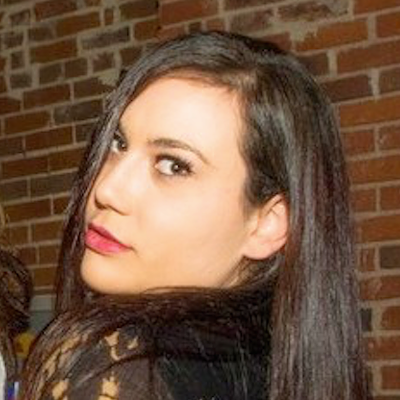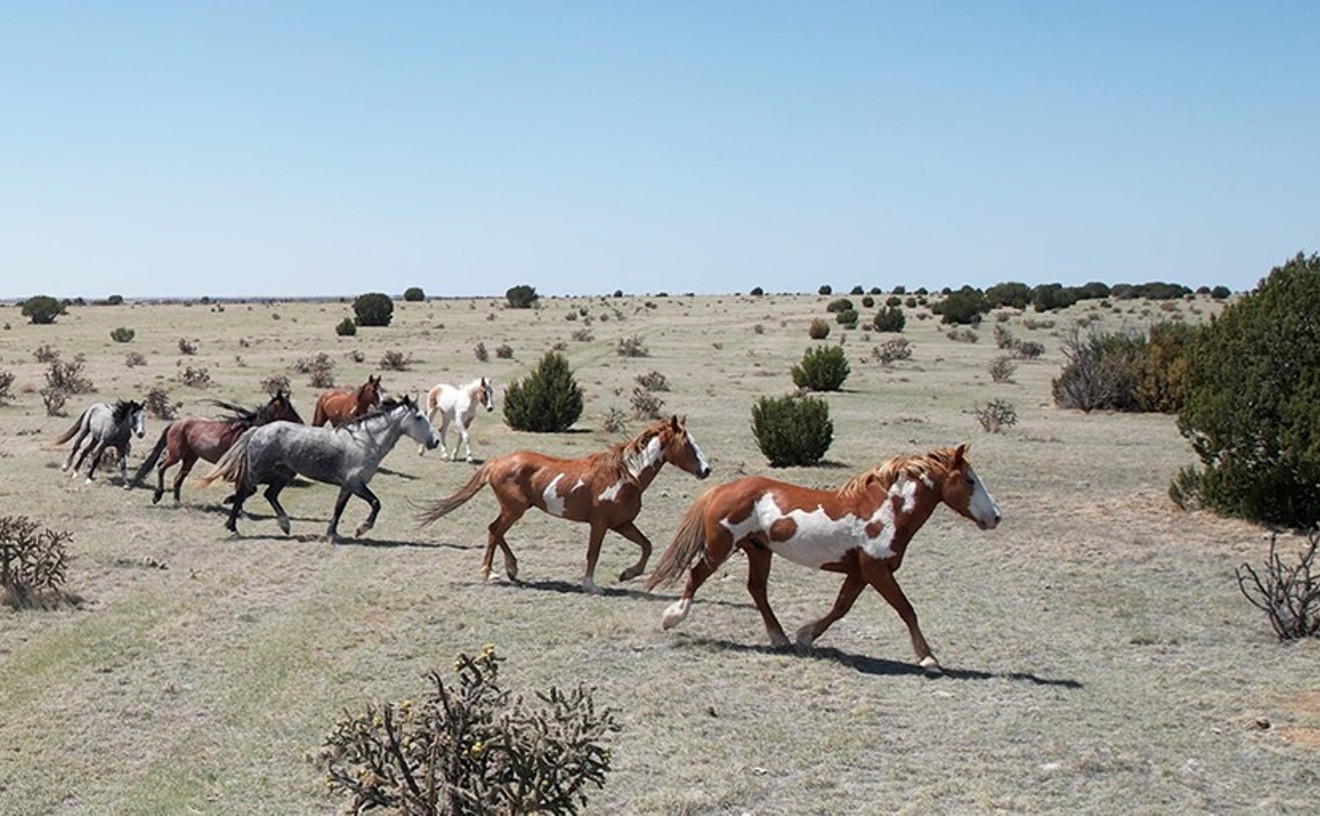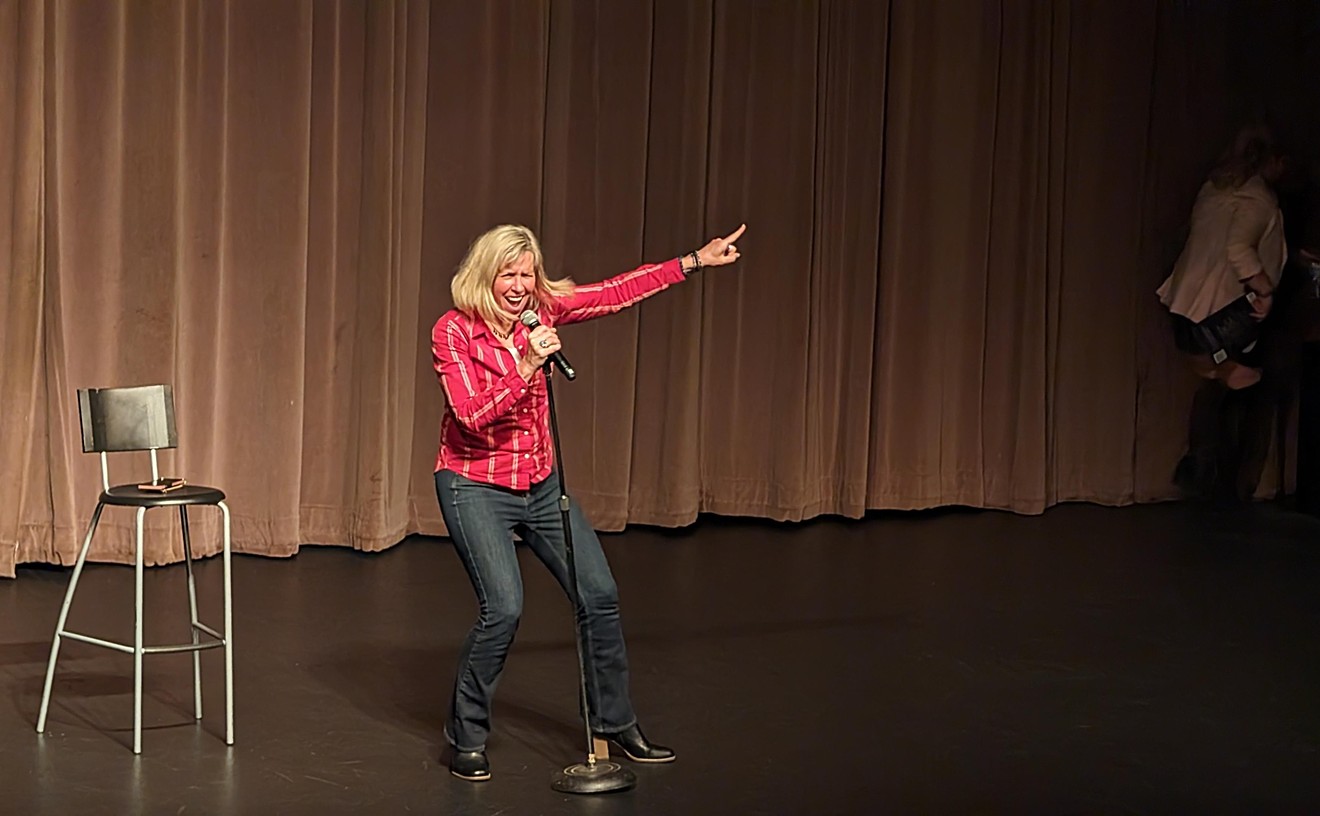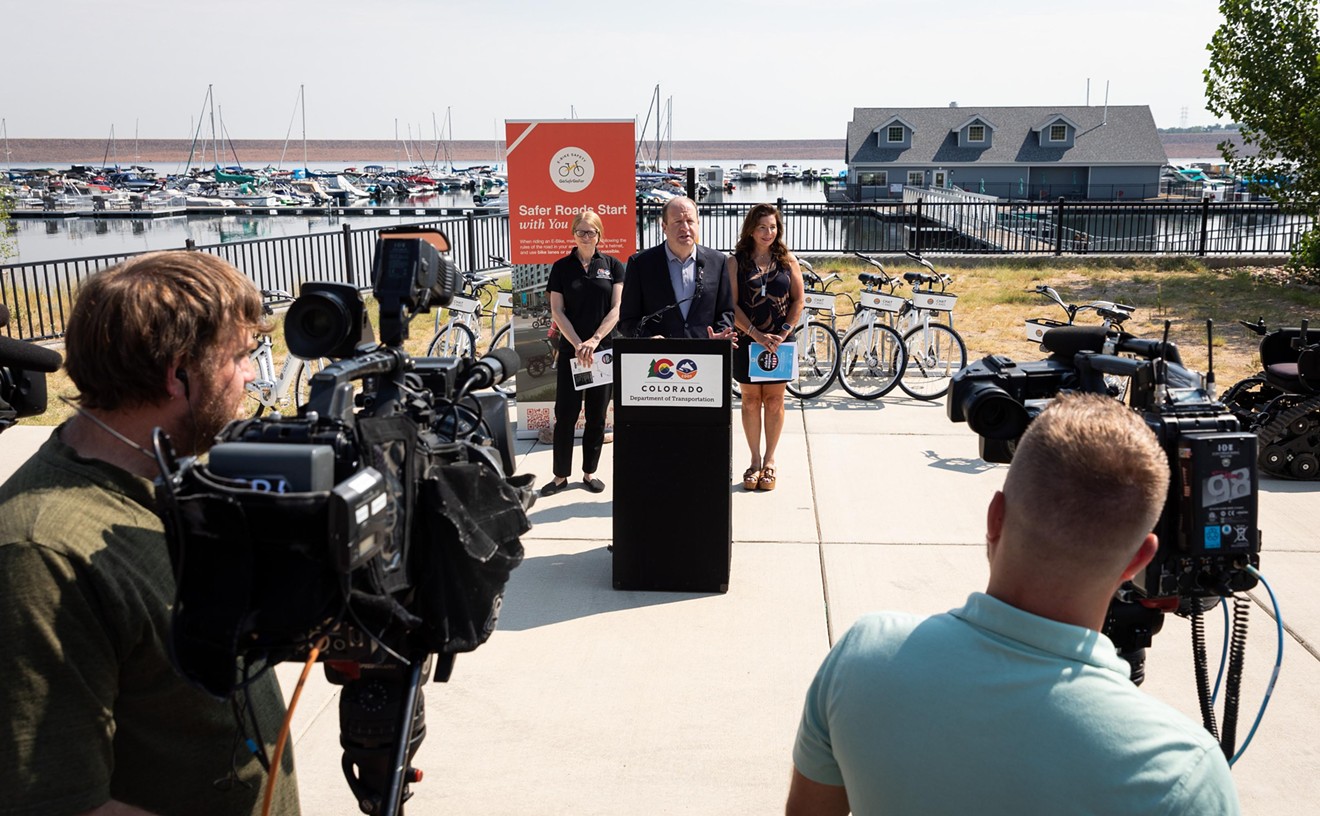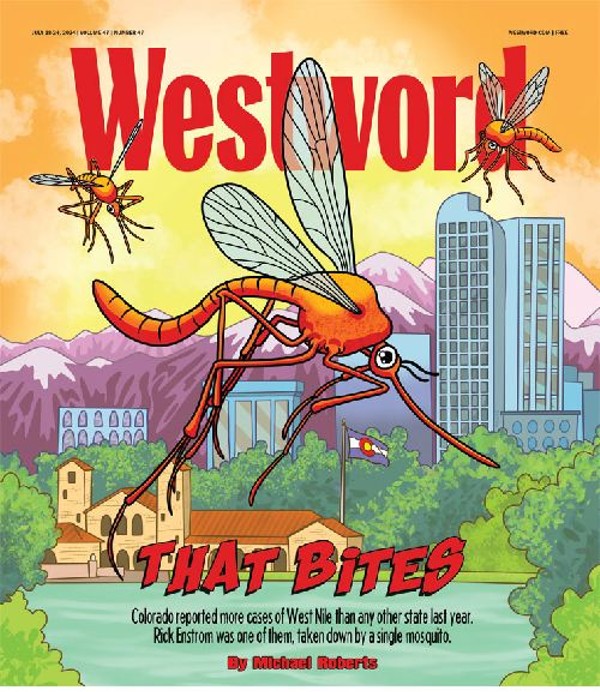Below the bustle of the highly trafficked corridor where Speer Boulevard meets Broadway, there's a new, reflective set of murals along the banks of Cherry Creek. Called "Paramount," the two murals were painted over the past several weeks by Alexandre Orion, a world-renowned artist from Sao Paulo, Brazil. And they are definitely worth seeing.
"There is a right spot to stand," Orion advises. "It's forced perspective, so the idea is if you're riding that way, if you look from here, it looks flat. It's reflective on each side. And the same thing for the other one, so when you look the opposite way, it makes more sense."
Mary Valdez of Denver Arts & Venues helped to procure the huge works by Orion as part of the Urban Arts Fund. One of the new murals faces another work for the UAF by a Brazilian artist: the piece that Alex Senna and Onesto painted in 2014.
"These are the first murals I've painted in color in fifteen years," says Orion. "I've been working in black and white for fifteen years. But I like the river, you know. I like the green, I like the city. I felt like going for colors because of that."
But there's meaning to the colors. "I'm talking about nature of America," Orion explains. "Not in a political or social, prejudicial way. I'm just talking about the relation of these native people to this ground, which connects to me, too, because I'm from America, from South America. So this is the primary stage of human beings in this land. And the child is the primary state of humans, so I'm just bringing it to the basic. This wall is all around the river. The Europeans came to this place, to my town, from the river.
"The city kind of starts from here. It's interesting to know you have the river and the walls around it. And the city is right up there.... This is our society; walls are our society. We live in a city made for cars, the idea of cars and capitalism. Walls are our mindset. You have that river and you have walls right there, walls here. It's kind of crazy — if you were homeless, where would you live? Here, for sure — it's such a great place.
In my vision, the surface divides the nature that's right here and alive from this crazy, chaotic way of living."
Orion wants people who see his murals to apply the message to their own lives. "When I talk about Native Americans, I don't represent the Native Americans, as you don't — we are a mix of different things," he says. "We are a new continent. We're not Europeans, we're not natives. We're something different. What I'm trying to say with this is that we have got to connect with some of this primary stuff. The relation this civilization had with nature, know what I mean? We should try to connect with this type of society."
Orion had help with his Denver project, including an assist from local artists Patrick McGregor and Anduriel Widmark. He also worked with kids on stencils for a Lighthouse Writers Workshop Project near the Denver Bicycle Cafe. "This was their work — I just helped out," he says.
While Denver's art community welcomed Orion with open arms during his stay, he says he's excited to get home to his own kids — and his city. "In Sao Paolo, you would love it," he promises. "It's a crazy city. Full of graffiti."
[
{
"name": "Air - MediumRectangle - Inline Content - Mobile Display Size",
"component": "12017618",
"insertPoint": "2",
"requiredCountToDisplay": "2",
"watchElement": ".fdn-content-body",
"astAdList": [
{
"adType": "rectangle",
"displayTargets": "mobile"
}
]
},{
"name": "Editor Picks",
"component": "17242653",
"insertPoint": "4",
"requiredCountToDisplay": "1",
"watchElement": ".fdn-content-body",
"astAdList": [
{
"adType": "rectangle",
"displayTargets": "desktop|tablet"
},{
"adType": "rectangle",
"displayTargets": "desktop|tablet|mobile"
}
]
},{
"name": "Inline Links",
"component": "18838239",
"insertPoint": "8th",
"startingPoint": 8,
"requiredCountToDisplay": "7",
"maxInsertions": 25
},{
"name": "Air - MediumRectangle - Combo - Inline Content",
"component": "17261320",
"insertPoint": "8th",
"startingPoint": 8,
"requiredCountToDisplay": "7",
"maxInsertions": 25,
"watchElement": ".fdn-content-body",
"astAdList": [
{
"adType": "rectangle",
"displayTargets": "desktop|tablet"
},{
"adType": "rectangle",
"displayTargets": "desktop|tablet|mobile"
}
]
},{
"name": "Inline Links",
"component": "18838239",
"insertPoint": "8th",
"startingPoint": 12,
"requiredCountToDisplay": "11",
"maxInsertions": 25
},{
"name": "Air - Leaderboard Tower - Combo - Inline Content",
"component": "17261321",
"insertPoint": "8th",
"startingPoint": 12,
"requiredCountToDisplay": "11",
"maxInsertions": 25,
"watchElement": ".fdn-content-body",
"astAdList": [
{
"adType": "leaderboardInlineContent",
"displayTargets": "desktop|tablet"
},{
"adType": "tower",
"displayTargets": "mobile"
}
]
}
]


